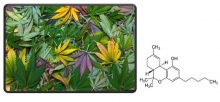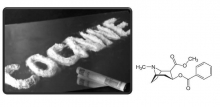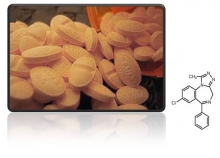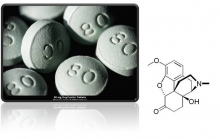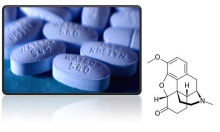You are here
Controlled Substances
OSBI Controlled Substances Unit
The OSBI Controlled Substances Unit is a section of the OSBI Criminalistics Division housed in three locations within the state:
- Forensic Science Center in Edmond, OK
- Northeastern Regional Laboratory in Tahlequah, OK
Members of the Controlled Substances Unit strive to focus on applying timely and accurate methodologies using state-of-the-art instrumentation and procedures commonly practiced within the forensic science community. The Controlled Substances Unit specializes in the analysis of unknown powders, crystals, liquids, tablets, waxes, blotter paper, and plant material to determine the chemical identity.
Uniform Controlled Dangerous Substances Act
The OSBI Forensic Chemistry Unit identifies and reports out substances controlled under Oklahoma state statute (Title 63). Oklahoma Statutes, Title 63, Chapter 2, Article 2 (Standards and Schedules) classifies controlled dangerous substances into Schedules I through V based upon the potential for abuse, medical use, and likelihood of abuse leading to physical or psychological dependence. Schedule I substances have the highest potential of abuse, no accepted medical use in the U.S., and the highest likelihood of abuse leading to physical or psychological dependence. Schedule V substances have the lowest potential for abuse, current accepted medical use in the U.S., and limited physical or psychological dependence.
Criminalists of the Forensic Chemistry Unit will testify in court on the findings of our analysis upon request.
Analytical Methods
Color Tests
Color tests are used presumptively to give an indication of what might be present in the sample. It also helps to determine which solvents to use in the analysis methods to follow. The color tests are similar to field test kits used by police officers. Color tests are screening tools only, therefore, additional analysis is required for identification of a substance. The OSBI Controlled Substances Unit utilizes Marquis and Cobalt Thiocyanate reagents. Each reagent responds to particular functional groups causing a characteristic color change depending upon the compound and its functional group.
Analysis by Gas Chromatograph (GC)
Gas chromatography is an instrumental analysis that separates the components of a mixture. The GC consists of three basic parts: an injection port, a chromatographic column, and a detector. The sample is diluted into the solvent and placed into a sample vial for analysis. The sample is then introduced into the GC. The time from injection of the sample until the detector produces a signal is called the retention time. The retention time of the unknown sample can be compared to that of a known standard. The OSBI Controlled Substances Unit uses this information as a presumptive indication of what may be present in the sample.
Conclusive Identification by Gas Chromatograph/Mass Spectrometer (GC/MS)
The sample components are separated by the GC portion of the instrument. Each component is fragmented by an electron beam and then analyzed by the mass spectrometer. Comparison of the fragment patterns of an unknown substance to that of a known standard allows for a conclusive identification.
Conclusive Identification by Infrared Detection (IR)
A sample absorbs infrared light based on the chemical structure of its components. Infrared spectroscopy can be used to identify most organic compounds based on absorption of radiation of the mid-infrared range from 4000 to 400 wave numbers. Conclusive identification is made by analysis of a sample's spectrum against a known spectrum. Analysis can be performed on a solid sample using Fourier Transform Infrared (FTIR).
Identification of Marihuana and Hashish
Samples of a vegetative nature, green leafy substance, green leafy plants, ashes or any other submittal which is suspected to be marihuana or hashish may be examined or analyzed using a series of tests: stereomicroscopic examination, gas chromatograph/flame ionization detector (GC/FID) and gas chromatography/mass spectrometry (GC/MS) or gas chromatograph/infrared detection (GC/IRD). The identification of marihuana and hashish requires a positive microscopic examination, GC/FID and GC/MS or GC/IRD examination.
For information on these drugs as well as a number of others, please, visit U.S. DEA Fact Sheets.
| Marihuana, Schedule I | Cocaine, Schedule II | Methamphetamine, Schedule II |
| Alprazolam, Schedule IV | Oxycodone, Schedule II | Hydrocodone, Schedule II |
- American Academy of Forensic Science
- American Society of Crime Laboratory Directors/Laboratory Accreditation Board
- D.A.R.E.
- Drug Destruction
- Drugs.com Pill Identifier
- Federal Bureau of Investigation
- K9 Training Aid Destruction
- Midwestern Academy of Forensic Scientists
- National Forensic Science Technology Center
- National Institute of Justice Programs
- Oklahoma Bureau of Narcotics
- OSBI Employment Process and Opportunities
- Rx Disposal Boxes
- Scientific Working Group for the Analysis of Seized Drugs (SWGDRUG)
- Southwestern Academy of Forensic Scientists
- Title 63. Public Health and Safety
- U.S. Drug Enforcement Administration

